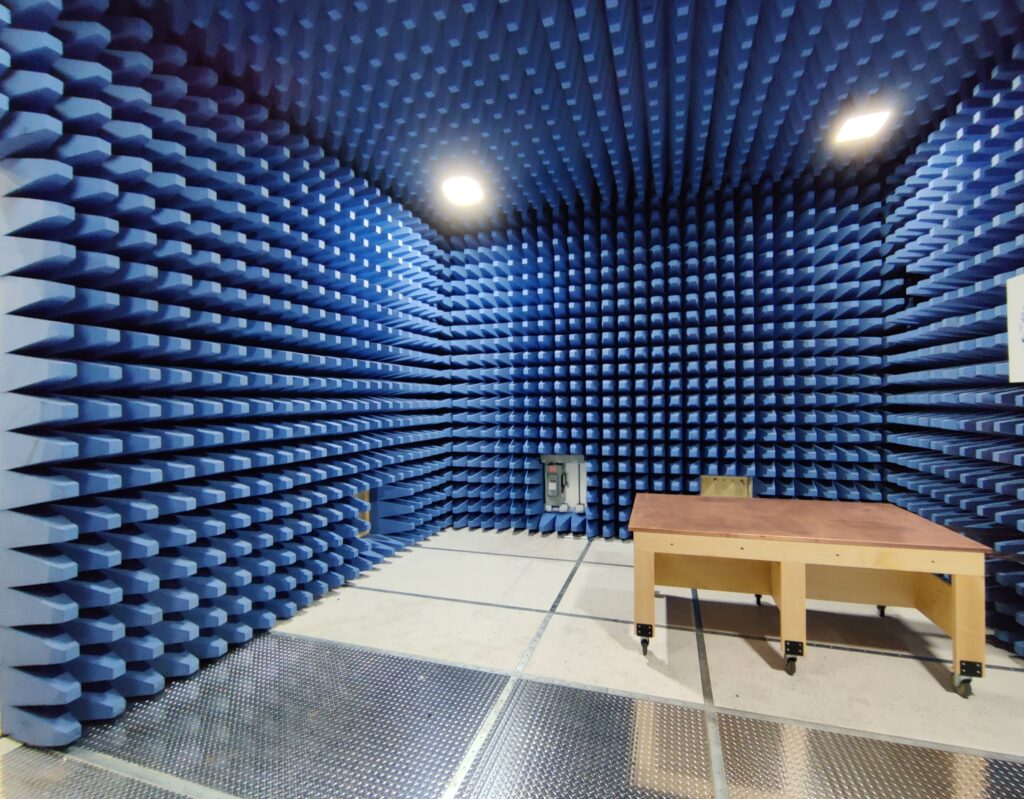|
|
Authored by: Nika Amralah, Innovation and Engineering Research Lead
When it comes to space missions, risk mitigation is of paramount importance. Extensive measures are implemented in space projects to minimize the likelihood of failure and to ensure a spacecraft’s capability to fulfill its function before it is launched into space and positioned in orbit. Non-destructive evaluation of spacecraft is crucial to simulate and design for the effects of launch and the space environment on materials, structures, and systems, thereby avoiding material degradation, reduced functional lifetime, and mission failure. Electromagnetic compatibility (EMC) testing stands as a pivotal stage in spacecraft projects for risk mitigation.
Environmental testing holds a critical role in spacecraft development as it can uncover issues stemming from poor quality control, assembly errors, damage, miscalculations, and more. The primary objective of testing is to iterate between identifying deficiencies and addressing them until all tests are satisfactorily passed. Once environmental testing is completed, no modifications to the spacecraft are allowed before launch. Identifying spacecraft defects early reduces project delays, unnecessary costs, and redesign efforts. Consequently, testing is often conducted at component or subsystem levels before complete system integration for final product testing.
In addition to vibration, shock, thermal vacuum, and acoustic testing, EMC testing is an indispensable part of the qualification test sequence. EMC testing validates the function of a device in its intended electromagnetic environment, focusing on emissions and susceptibility. Emissions refer to the electromagnetic signatures emitted from the device, while susceptibility measures the device’s response when subjected to an electromagnetic environment. Both emissions and susceptibility are studied in terms of conducted and radiated behavior. It is imperative that the spacecraft, along with all onboard subsystems, does not produce electromagnetic interference (EMI) that could adversely affect itself or the launch vehicle. Moreover, the spacecraft must not be susceptible to emissions that could jeopardize its ability to perform the mission safely and nominally. This susceptibility condition encompasses emissions from both the spacecraft itself and external sources.
EMC testing is conducted in an anechoic chamber, such as those designed and manufactured by Raymond EMC, which specializes in building chambers specifically tailored to customer specifications. EMC/EMI test requirements for spacecraft are typically derived from military standards, particularly MIL-STD-461F: Requirements for the Control of Electromagnetic Interference Characteristics of Subsystems and Equipment. Test procedures are customized to accommodate mission-specific requirements, with special attention to protecting sensitive and mission-critical instruments onboard. Supplementary test standards, such as MIL-STD-461C and MIL-STD-464C, as well as guidelines and test methods published by NASA, may also be referenced.
Environmental testing allows for risk mitigation by verifying that a spacecraft can endure and operate as intended following exposure to the harsh conditions of launch and space. Testing at lower levels of assembly enables early identification of issues with reduced time and cost implications. EMC testing aims to ensure that the spacecraft does not interfere with itself, cause interference with nearby devices, or be adversely affected by the electromagnetic environment. With demonstrated expertise in building EMC chambers for spacecraft applications, Raymond EMC is a trusted supplier to the aerospace industry for all anechoic chamber needs.

